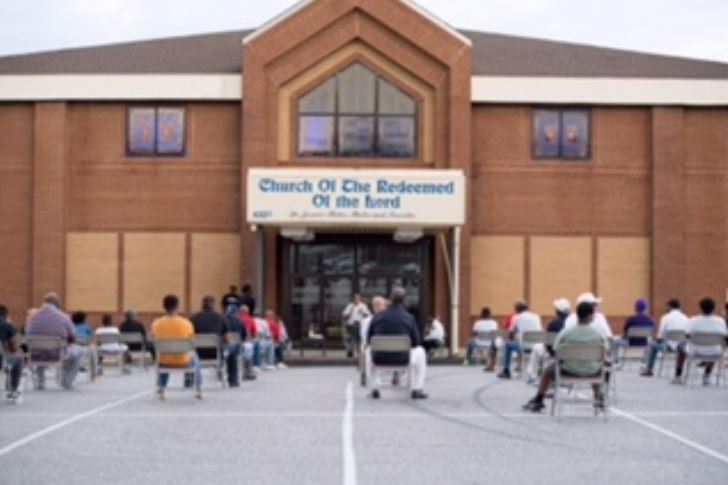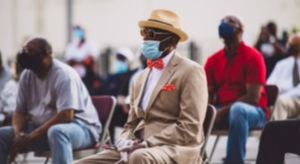

By Joi Thomas
AFRO Faith Community Correspondent
Many people look forward to going to church on Sunday mornings. They like to hear the choir sing, the preacher preach and to fellowship with others. In March of 2020, with the onslaught of COVID-19, everything changed. For the first time in most people’s lives, the doors of the physical church building were closed. Quarantine mandates made it impossible, and in some cases illegal, to hold large indoor gatherings.
Without in person services, what were church leaders to do? How would the church survive?
Instantly, the church was forced to use technology as its sole medium for worship. Everyone had to stay connected in a virtual way instead of in person. The Rev. Donald Wright, pastor of Gethsemane Baptist Church in Baltimore City said, “Prior to the pandemic we were not streaming at all. We have an older congregation and when I arrived at GBC, there was no digital footprint at all for the church. As the church has begun to grow, the need for streaming has increased. The pandemic expedited our move to incorporating streaming and social media into our DNA. It’s been a welcomed addition for many but still a learning curve for some.” This sentiment is shared by many churches. The pandemic made streaming a necessity and something that needed to be quickly adapted to.
As 2020 went on, and the doors of many churches stayed closed, the need for more than just streaming worship arose. Church leaders had to make sure their members were connecting in some real way. Bishop Walter Thomas, pastor of New Psalmist Baptist Church in Baltimore, saw a need for more than just Sunday morning virtual service. “The pandemic shook the very core of our foundation. Everything was uncertain. I knew that we had to stay connected as a church family. We began weekly prayer calls and virtual bible study.
He said he held virtual lunches with groups of members on Zoom. “We held virtual town hall meetings about various topics. We even launched our small groups solely on Zoom and had more people enrolled than when we were in the building.” Not only has the church survived but it has thrived during the pandemic. Many new opportunities have been presented to the church to do ministry in a different yet impactful way.

Bishop Duane Johnson of Speak to my heart Ministries used technology as a way to bridge the gap between the younger and older generations. “We asked all of the young people in our church to assist their parents and grandparents who were uncomfortable with Zoom, YouTube, and all social media platforms. The young people of the church and community kept the social presence of our church thriving. The pandemic stretched us and caused us to grow exponentially. We already had streaming available, but we really invested major resources into upgrading what we had.”
The most commonly mentioned streaming platforms used by churches are YouTube, Facebook Live and their church websites, with Zoom being used for meetings, bible studies and other non-worship experiences. The bible commands the church to spread the gospel of Jesus Christ and technology helps to obtain that goal. However, there are some challenges to this. Many parishioners have become comfortable with worshipping at home and may not come back; the pandemic is not over and some don’t feel comfortable coming back. Worshipping at home makes it easier to multitask while attending church, so parishioners may not be so focused. The list goes on. However, according to Bishop Dwayne Debnam, pastor of Morning Star Baptist Church, there is no turning back. “The phygital church is here to stay!!” Phygital refers to the physical and digital church. Now that some churches are back to in- person worship, the online viewer must not be forgotten. The church has moved to a permanent new location- the internet, and streaming church activities is here to stay.
Apostle Leah White, pastor of Greater Faith Baptist Church, sums up how the church had to pivot in this season. “We were evicted from our buildings by CORONA so that we could carry out the Great Commission. In a great sense, the pandemic leveled the playing field. With grand slim budgets, large budgets, and no budgets, we all had to be creative and return to the gospel message, with no frills, bells or whistles. We have since added our own creativity, but the smallest churches were able to reach the same audiences as their counterparts.” Every church faced challenges, whether they were prepared for the digital move or not. However, one thing is for certain, pastors and leaders all over arose to the challenge. They preached from home. As the weather allowed, they preached in parking lots. They served communion in “drive-by”style. They preached in empty sanctuaries and developed creative ministry offerings to keep the church thriving during the pandemic. While some church doors are open and others remain closed, the landscape for how church is done has forever been changed. While the future is still uncertain, one thing is for sure, the church is here to stay.
Help us Continue to tell OUR Story and join the AFRO family as a member – subscribers are now members! Join here!
The post Technology and Worship: The ‘phygital’ church is here to stay appeared first on AFRO American Newspapers .












